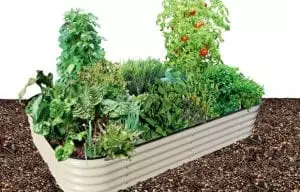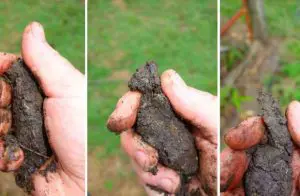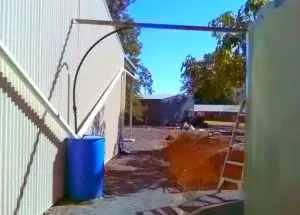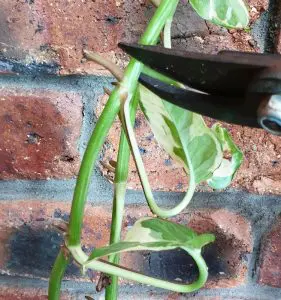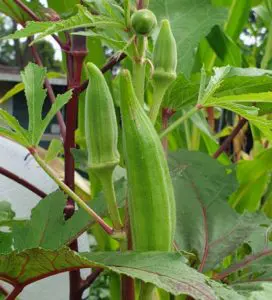Many people enjoy having their fruit trees and exotic plants in pots- and some of them require a specific acidic potting mix in order to thrive. In this article I’ll be showing you how to create an acidic potting mix that plants like blueberries, camellias and azaleas will love.
Soil or potting mix ‘acidity’ refers to the pH value. pH is the measurement of potential hydrogen in your soil or growing medium, and a pH of 7 is considered neutral. An alkaline or sweet soil has a pH of above 7, and an acid soil has a pH of below 7. The pH level in your soil is important because it has a profound effect on the plants’ abilities to take up nutrients. Put another way, if the soil pH isn’t what a particular plant needs, their growth and production will range from average to poor.
Vegetables such as potatoes, capsicum (sweet peppers), pumpkins, radishes, carrots, cauliflower, celery and tomatoes prefer a slightly acidic soil with a pH range of about 5.5-6.5. Other food plants like blueberries, chicory, eggplant, shallots, sorrel and sweet potato prefer a very acid soil in the 4-5.5 range. This acidic potting mix recipe is for the latter.
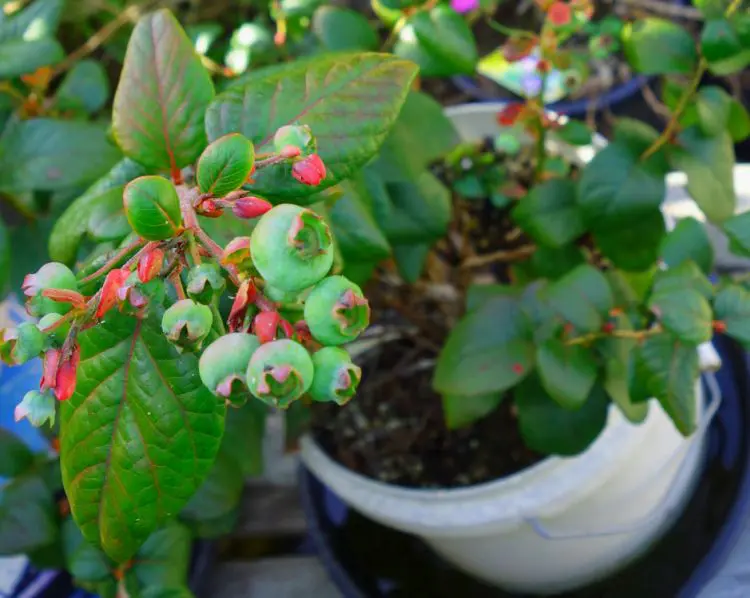
In this article I’ll be focusing on blueberries, but this acidic potting mix is good for any plant that needs a very acid soil.
Blueberries can be very fussy about their growing conditions. They like evenly moist yet free-draining slightly coarse to sandy soil with a low pH of 4-5.5. Those who are not in the ideal growing zone for them may need to keep their blueberries in pots so they can provide the best possible soil, sun & water conditions for them.
Most of the varieties we grow in Australia (the southern highbush types from Central & Southern USA) need lots of rain, a breeze blowing through their branches, sandy soil, mild to moderate winters and hot to mild summers.
If you’re going to pot up or re-pot a blueberry plant, it should only be done during its short period of non-flowering. Depending on the variety, this could be at any time of the year. The important thing is to do it while it’s not flowering. You will find that blueberries are only available to buy from online nurseries during this period.

Acidic Potting Mix
My measurements are based on ‘parts’, which allows you to easily use this recipe for any volume of mix that you need to make. A part can be any size you want it to be- as long as you use the same container for measuring every component. I use a bucket as ‘one part’, and use that same bucket to measure each ingredient. If you are just making a small amount for a small plant, use a miniature bucket or a potting mix scoop.
Regarding the quality of ingredients: I use the best I can find or afford. Experience has taught me that plants that spend their whole lives in pots perform at their best with quality ingredients. On top of that, the better the quality, the longer the ingredients last, so the actual cost is not as high as it appear on the price tag. I have found that premium potting mix works better than cheap stuff. Fine grade coir makes a far more even mix than the coarse orchid-grade one. Quality chicken manure pellets stay wet & break down better than cheap ones do.
Here is my proven recipe to make your own acidic potting mix in any quantity you require. Always make it in advance, as it needs to sit for around 2 weeks before you use it. This is because you need to allow this time for the sulphur to turn the mix acidic.

The Recipe
- 4 parts premium potting mix
- 4 parts soaked fine grade coconut coir
- 1/2 part organic chicken manure pellets
- 1 part coarse or medium grade perlite
- elemental sulphur (quantity as required)
Use a generously sized container to make your mix in. I use a wheelbarrow, because I find it makes it easy to thoroughly mix the ingredients, which is essential to do before adding the sulphur. Once the basic ingredients have been mixed, you need to test the pH before adding the elemental sulphur. Follow the instructions on your sulphur pack to measure the exact amount. The sulphur shown in the photo here is granular, which makes for even sprinkling across the surface of the mix.
Lastly, mix, mix, MIX. It’s really important to have all your ingredients evenly distributed, so mix them thoroughly!

Once your mix has been made, it needs to stand for between 10 and 15 days for the sulphur to work its magic. Moisten (not wetten!) your batch after mixing the sulphur through. As shown above, you can test it part-way through the sitting process to check on the progress.
One way to speed up the change to an acidic pH is to leave out the chicken manure pellets until after the pH has dropped. The manure will always have an alkalising effect, no matter when they are added. I prefer to add them at the beginning, because their bio life significantly benefits the homogenous state of the mix. In other words, the mix comes alive and turns into a living, growing medium more quickly when it contains chicken manure.

